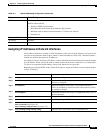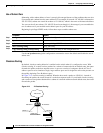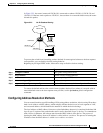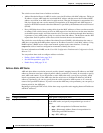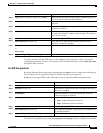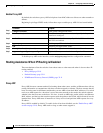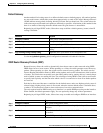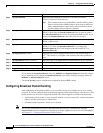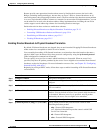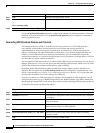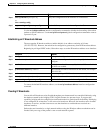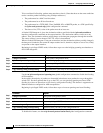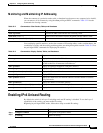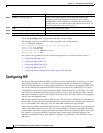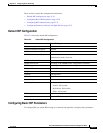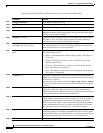
32-13
Cisco ME 3400 Ethernet Access Switch Software Configuration Guide
78-17058-01
Chapter 32 Configuring IP Unicast Routing
Configuring IP Addressing
Routers provide some protection from broadcast storms by limiting their extent to the local cable.
Bridges (including intelligent bridges), because they are Layer 2 devices, forward broadcasts to all
network segments, thus propagating broadcast storms. The best solution to the broadcast storm problem
is to use a single broadcast address scheme on a network. In most modern IP implementations, you can
set the address to be used as the broadcast address. Many implementations, including the one in the
switch, support several addressing schemes for forwarding broadcast messages.
Perform the tasks in these sections to enable these schemes:
• Enabling Directed Broadcast-to-Physical Broadcast Translation, page 32-13
• Forwarding UDP Broadcast Packets and Protocols, page 32-14
• Establishing an IP Broadcast Address, page 32-15
• Flooding IP Broadcasts, page 32-15
Enabling Directed Broadcast-to-Physical Broadcast Translation
By default, IP directed broadcasts are dropped; they are not forwarded. Dropping IP-directed broadcasts
makes routers less susceptible to denial-of-service attacks.
You can enable forwarding of IP-directed broadcasts on an interface where the broadcast becomes a
physical (MAC-layer) broadcast. Only those protocols configured by using the ip forward-protocol
global configuration command are forwarded.
You can specify an access list to control which broadcasts are forwarded. When an access list is
specified, only those IP packets permitted by the access list are eligible to be translated from directed
broadcasts to physical broadcasts. For more information on access lists, see Chapter 28, “Configuring
Network Security with ACLs.”
Beginning in privileged EXEC mode, follow these steps to enable forwarding of IP-directed broadcasts
on an interface:
Command Purpose
Step 1
configure terminal Enter global configuration mode.
Step 2
interface interface-id Enter interface configuration mode, and specify the interface to
configure.
Step 3
no shutdown Enable the interface if necessary. By default, UNIs are disabled and
NNIs are enabled.
Step 4
ip directed-broadcast [access-list-number] Enable directed broadcast-to-physical broadcast translation on the
interface. You can include an access list to control which broadcasts
are forwarded. When an access list is specified, only IP packets
permitted by the access list are eligible to be translated.
Step 5
exit Return to global configuration mode.
Step 6
ip forward-protocol {udp [port] | nd | sdns} Specify which protocols and ports the router forwards when
forwarding broadcast packets.
• udp—Forward UPD datagrams.
port: (Optional) Destination port that controls which UDP
services are forwarded.
• nd—Forward ND datagrams.
• sdns—Forward SDNS datagrams



